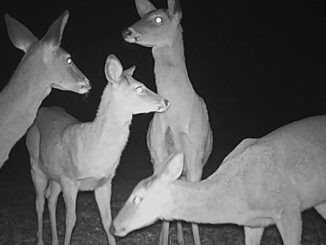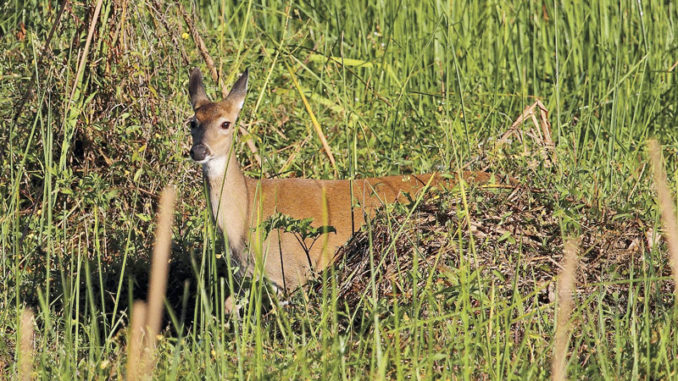
Louisiana’s top coastal region for winning with whitetails
Some 39 years ago I made my first deer hunt in Area 7’s coastal marshes. I had relocated to Louisiana from New Mexico after getting married to a Bayou Vista gal who happened to be the daughter of one of the last marsh men who trapped fur down the bayous.
I grew up hunting whitetail deer in Michigan and later, while in the Air Force, hunted mule deer in the Sacramento Mountains of New Mexico. As such, I thought I knew how to hunt deer.
I had been successful hunting whitetails in the farm fields and uplands of my home state. And even more successful backpacking in the mountains of the arid southwest for mule deer, but marsh hunting? This was something else altogether.
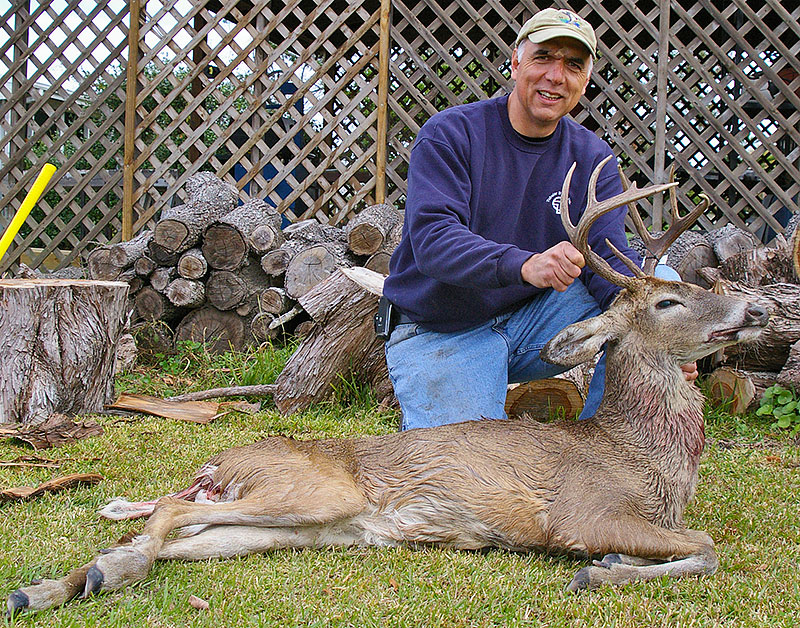
Higher ground?
My first exposure to hunting the marsh was at my father-in-law’s camp on Leopard Bayou near Wax Lake. Pop was never one to show you how to hunt deer. He was too busy skinning and pelting nutria to go still hunting whitetails, but he didn’t have a problem telling you where you might kill a deer.
He directed me to a little canal off the Leopard, where it formed a spoil bank of higher ground in the marsh. In the marsh you really must qualify what’s “higher ground.” Seldom is a spoil bank or ring levee more than a few feet in elevation above the marsh, which is also pretty much one to two feet above sea level.
My brother-in-law accompanied me on the reconnoiter. There were water oaks and willow trees all along that canal and plenty of deer tracks from what I could see. The tracks led out into the marsh and disappeared into thick patches of myrtle trees, so I followed them for a bit.
The first thing I noticed was how boggy the marsh was. I was wearing hip waders, so when things got a bit dicey, where I sunk up to my knees, I thought to myself, “well at least I didn’t get wet.”
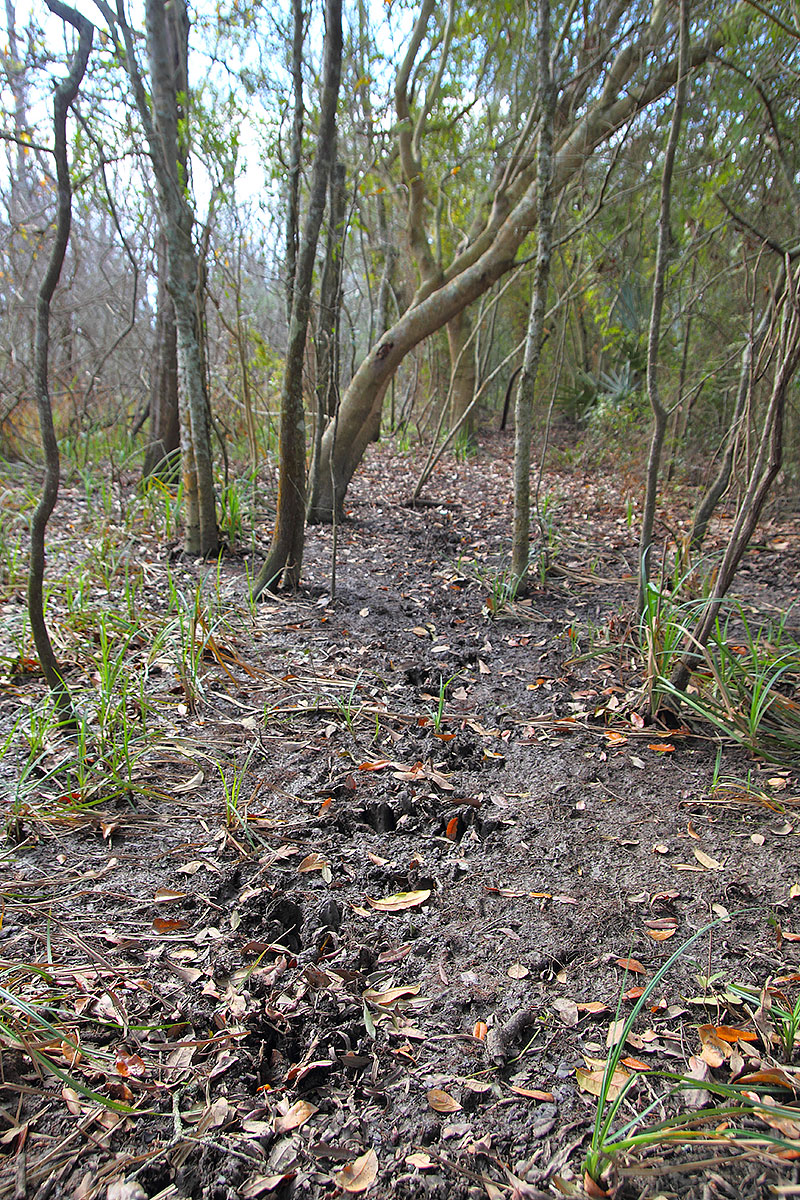
After walking around in circles looking for deer sign, I realized that I was all turned around and unsure of the direction back to the spoil bank where we started.
That’s when I said to my brother-in-law, “Kirk. Do you know where you’re at?”
To which Kirk replied, “No, I thought you did!”
“Oh, good grief!” I thought to myself. “Here I am lost as a goose and with someone who grew up here without a clue.”
Right about then, I heard an outboard running along the bayou, so I decided to walk toward the sound. No sooner had I started walking, I suddenly sunk into a hole up to my waist in the stinkiest mess of swamp you could ever imagine.
As it turned out, we wound up directly behind the camp. The outboard we heard were other family members coming down for the weekend.
That first trip left me full of questions and wondering how on earth could a deer live in this mess. Moreover, how could they walk or run — or hunt — in it?
They do live in it
The fact is, they do live in it. What’s more, Area 7 is a deer hunt region that’s known for some of the highest deer harvest rates year in and year out.
Johnathan Bordelon, Louisiana Department of Wildlife and Fisheries Deer Program Manager, said Area 7’s harvest was at a 10 year high last season.
Bordelon said, “There were a couple of storm-impacted years that may have affected the 10 year average, but regardless, the reported harvest was at a 10 year high. Deer Area 7 outperforms all other coastal areas per habitat acre. And, portions of Area 7 offer the most productive habitat in the state. This has resulted in higher sustained harvest rates. Unfortunately, coastal land loss, and changing site conditions have resulted in a different trend for other coastal areas outside of Area 7.”
Centerville deer hunter, James Wilson, has hunted Area 7 all of his life and seen changes over the years. But, despite those changes he has been successful most years.
Wilson laughed saying, “Granted I’m 240 pounds and 60 years old now, but walking the marsh is like walking on soup. The marsh seems to be getting softer and softer every year and we’re losing more and more to storms and subsidence. It’s tough hunting. During the 2022 season, I was walking the marsh and twisted my knee causing a meniscus tear that I had to have surgically repaired last year.”
Food and trails
The thing about Area 7 is the food it produces. In the uplands across the country, deer hunters look for rubs and scrapes, but not so much with coastal marsh hunters.
“I pretty much hunt the same stands year in and year out,” Wilson said. “I don’t look for rubs and things like that. I figure if there’s food and trails, I’ll be all right. But if I scout a new area, it’s pretty much the same thing. ‘Are there beaten down roads and is there plenty of food?’ Those are the two things I look for.”
Most first-time marsh deer hunters aren’t familiar with the abundance of natural food available to deer in the marsh. Natural foods like marsh cow peas, alligator vine, willow tree leaves, American beauty berry, palmetto seeds, water oak acorns, and wild pecans, among other foods, help marsh whitetails become butterball fat prior to the rut.
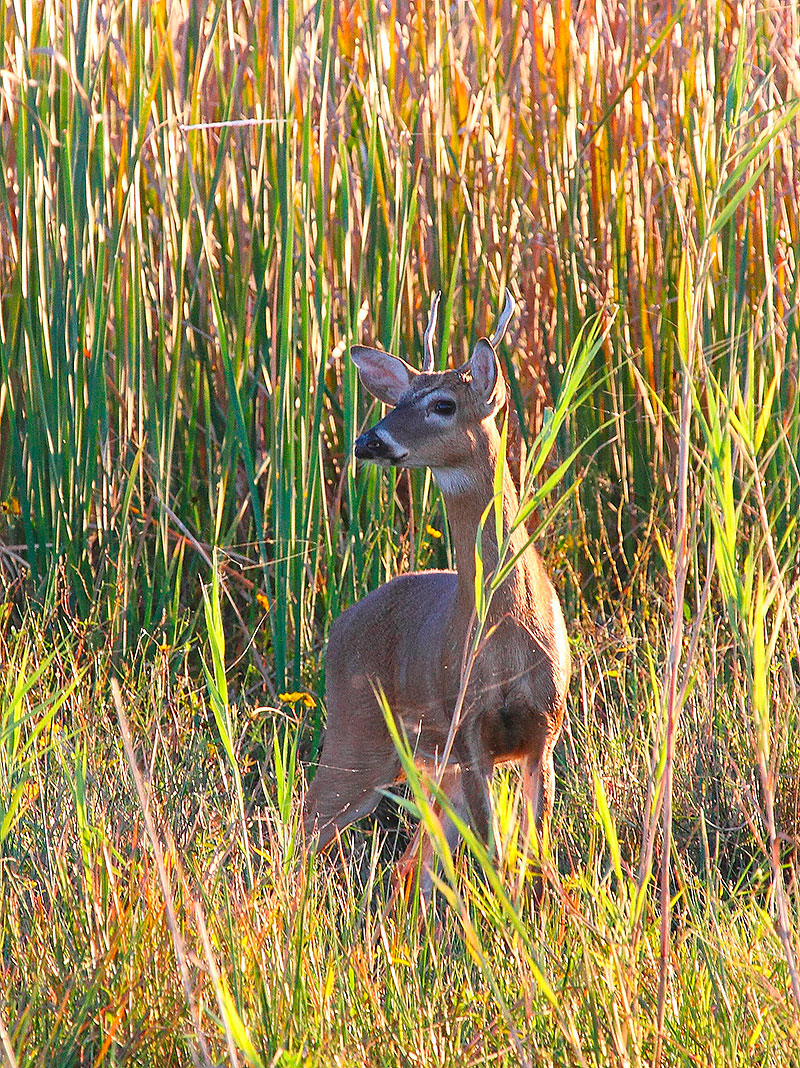
It’s all natural in the coastal marshes. By contrast, in other deer hunt areas throughout the state, hunters put in food plots and feeders to attract deer to their stands. Not so in the marsh.
Once deer hunters find beaten down roads in the marsh, along with an abundance of food, the next thing to do is put up a stand.
“You’ve got to do your diligence when it comes to your stands,” Wilson said. “I make sure I get them cleaned up and double check them to make sure they’re still safe and secure. I want to make sure the food is still available where they’re located and if not, I move them.
“I also make my stands where they’re comfortable. I’ll make them about four feet by four feet, where I can sit in a chair and sit for hours. The longer I can sit in the stand the better chance I’ve got or one of my grandkids have got of killing something if they’re with me.”
Unlike the uplands, there are no pipeline right of ways to sit over, where hunters can see for hundreds of yards and kill a deer crossing. Instead, where allowed, some hunters use airboats to break roads in the flag and cut grass to create manmade roads where deer can be seen crossing. Essentially, deer are like people who like to take the path of least resistance. Hence, airboat trails can be productive.
Breaking these trails also doesn’t harm the marsh, as the flag and cut grasses go flat each winter and grow back in the spring. Again, where airboats are allowed, it can help a hunter to actually see deer going in and out of thick cover.
Regular gun and primitive weapon hunters can expect shots ranging from point blank to as long as 300 yards depending on the set up. Since most land companies along the coast don’t allow airboats, where roads can be broken, shots tend to be closer, “when” you do spot a deer in the marsh it’s usually reasonably close.
Typical rounds
Typical rounds you see utilized in the marsh range from the 7mm-08 to 300 Winchester Magnums and everything in between. Popular primitive weapon calibers are the 45-70 government, .444 Marlin, and .35 Whelen.
Archery hunters can be successful too, by sticking to canal banks watching over beaten down trails that lead to locations where deer feed in the marsh.
Area 7’s seasons are also long. Archery season in 2023-2024 runs from Sept. 16 through Jan. 15. And primitive firearms and regular firearms combined run from Oct. 14, 2023, through Jan. 7, 2024, this year.
“Deer Area 7 is recognized as the most productive coastal area within Louisiana,” Bordelon said. “That is supported by DMAP harvest data as well as harvest rates per habitat acre. The result has been a season framework more liberal than coastal areas to the east and west. Without major changes to habitat, the area should remain productive with sustained harvest rates above coastal averages.”
Perhaps the only downside to Area 7 is, like most of Louisiana, 95 percent of the deer hunting going on is behind locked gates on private land. But, if you’re lucky enough to get into an Area 7 lease or are invited to hunt, don’t pass up the opportunity. You won’t regret it.
There is some public opportunity to hunt deer along the coast in Area 7. The Atchafalaya Delta WMA offers archery deer hunting for either sex from Oct. 1, 2023, through Jan. 31, 2024, on the Main Delta only. There is no archery deer hunting on the Wax Lake Delta.
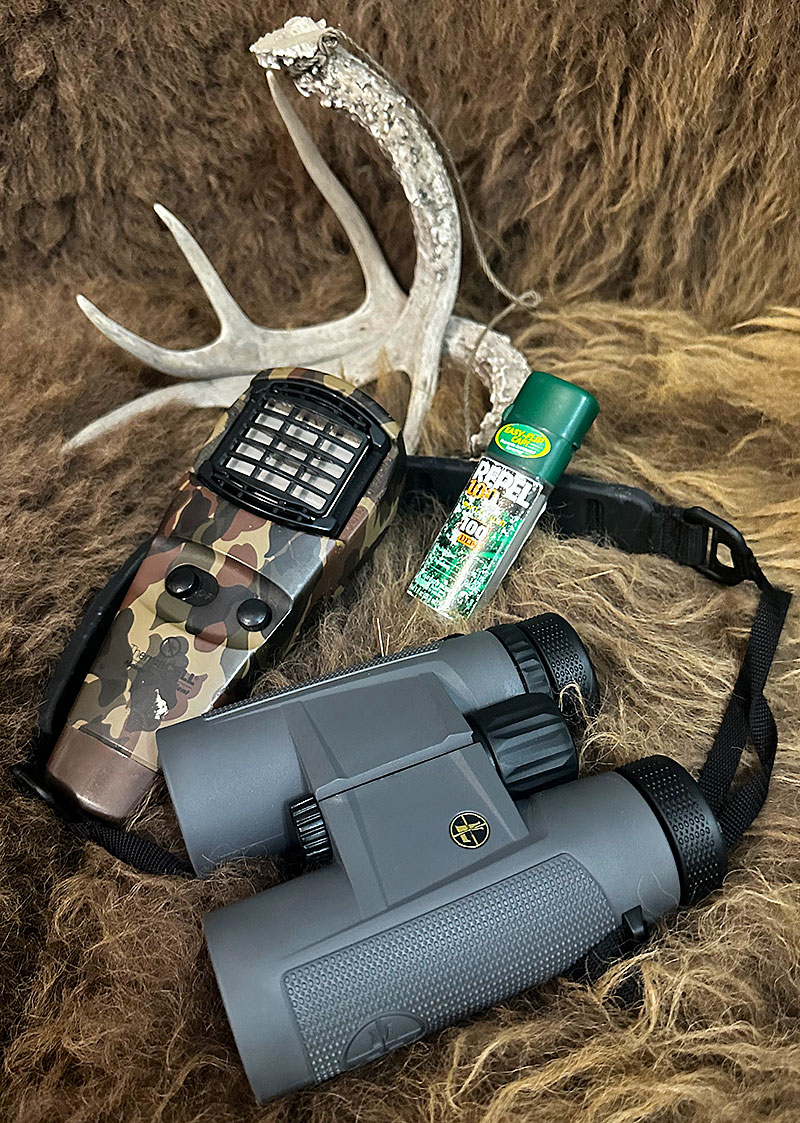
There are also youth deer hunts on the Main Delta scheduled for Oct. 7-8, 2023, and Oct. 14-15, 2023, using “shotguns with buckshot” only that are also either sex. Hunters should make sure they check all regulations and self-clearing requirements prior to these hunts.
What to bring marsh hunting
Area 7’s season runs from late summer and early fall when temperatures are still warm, sometimes seeming too warm to hunt. Not only is the foliage thick, green and difficult to see through, but it is also full of mosquitos.
Be sure to bring mosquito repellent, Thermacell, or a mosquito head net — or all three. At this time of year, they will literally carry you away.
Also, be sure to bring a pair of good binoculars. With thick foliage, deer are extremely hard to see. Often deer are moving, but you simply can’t see them. Binoculars help you to see small patches of brown or make out the movement of an ear flicker as a deer brushes away insects.

